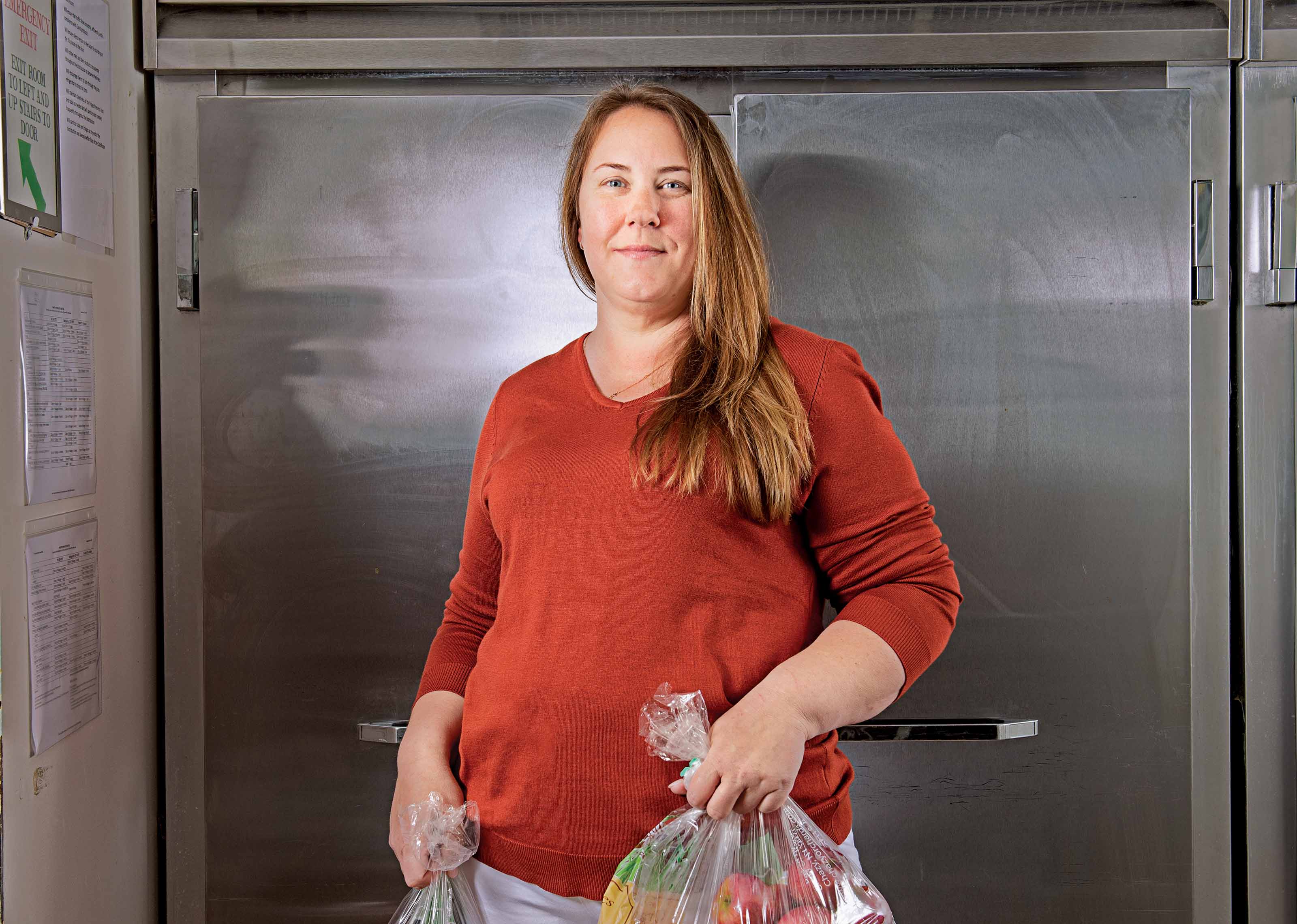Small-Business Success Story: Molly Moon's Homemade Ice Cream
She uses local ingredients in her ice cream and offers generous benefits to employees.

Kiplinger's spoke with Molly Moon Nietzel, 38, founder of the Seattle-based dessert company Molly Moon's Homemade Ice Cream, about why she left an executive-level position in the nonprofit world to start her own business. Here's an excerpt from our interview:
Why ice cream? I worked in an ice cream shop in my hometown of Boise, Idaho, and at one in Missoula, Mont., in college. For most of my twenties, I was executive director of a political nonprofit that I founded, but eventually I burned out on asking people for money. When I whined to my mom, “What will I do with my life?” she said, “Why not open an ice cream shop?” I opened my first shop in Seattle in 2008, and immediately there were lines around the block.
What’s special about your formula? Our ice cream is 19% butterfat. The milk and cream come from local dairy farms, and they are hormone- and antibiotic-free. Our ice cream has some of the lowest sugar content in town, and we use only non-GMO cane sugar. When we started, it was hard to find local organic ingredients, such as strawberries, in commercial quantities. It’s still not easy, but it’s easier. [See Molly’s blog at www.mollymoon.com/blog.]

Sign up for Kiplinger’s Free E-Newsletters
Profit and prosper with the best of expert advice on investing, taxes, retirement, personal finance and more - straight to your e-mail.
Profit and prosper with the best of expert advice - straight to your e-mail.
Where do you make the ice cream? We make it in every shop, rather than in one big commissary. Ice cream delivered in trucks melts and refreezes, which leads to icy ice cream.
What’s your biggest seller? Cookie dough—oatmeal chocolate-chip dough in a nutmeg-and-cinnamon ice cream. But spring garlic and cheddar cheese were two that bombed.
How much do you charge? We charge $4.25 a scoop and $9.50 for an 18-ounce “scooper’s pint.” Because of a global shortage of vanilla beans, a gallon of organic vanilla costs us $420. We’re doing some testing to decide whether we need to use vanilla in as many flavors.
How did you fund your start-up? I knew people in my network who had money to invest, including a Silicon Valley venture capitalist, and soon raised $220,000. One of the people I asked was a former boyfriend, Zack Reinig. He invested $50,000, and his parents invested, too. Zack and I later married, and we have a beautiful daughter, February Moon Reinig. To open our second shop quickly, I raised money a second time in exchange for equity. Since then, we’ve financed growth through cash flow and a bit of debt.
How have you grown? Our revenues in 2008 were almost $400,000. In 2016, they were nearly $6.6 million, and we expect to hit $7.9 million in 2017. We have eight shops now, and we’ll add another shop this year and two more next year. We have 100 to 120 employees year-round, and we hire seasonally, so we’ll have about 212 employees this summer.
What’s your greatest satisfaction? Creating jobs and building a company that is a leader in labor practices. Every new shop creates 20 jobs. We pay 100% of medical premiums for employees and their children, and we offer a family-leave plan. This past spring, we launched a 401(k) program. We’re matching employees’ contributions up to 1% of their income in 2017, and we expect to raise the match to 2% in 2018 and 3% in 2019.
Get Kiplinger Today newsletter — free
Profit and prosper with the best of Kiplinger's advice on investing, taxes, retirement, personal finance and much more. Delivered daily. Enter your email in the box and click Sign Me Up.

-
 The AI Doctor Coming to Read Your Test Results
The AI Doctor Coming to Read Your Test ResultsThe Kiplinger Letter There’s big opportunity for AI tools that analyze CAT scans, MRIs and other medical images. But there are also big challenges that human clinicians and tech companies will have to overcome.
By John Miley Published
-
 The Best Places for LGBTQ People to Retire Abroad
The Best Places for LGBTQ People to Retire AbroadLGBTQ people can safely retire abroad, but they must know a country’s laws and level of support — going beyond the usual retirement considerations.
By Drew Limsky Published
-
 How to Find Foreclosed Homes: Best Foreclosure Listings Sites
How to Find Foreclosed Homes: Best Foreclosure Listings SitesMaking Your Money Last Find foreclosed homes for sale on these foreclosure listing websites. Search for properties on these free, paid or government sites.
By Bob Niedt Last updated
-
 Four Tips for Renting Out Your Home on Airbnb
Four Tips for Renting Out Your Home on Airbnbreal estate Here's what you should know before listing your home on Airbnb.
By Miriam Cross Published
-
 Is Relief from Shipping Woes Finally in Sight?
Is Relief from Shipping Woes Finally in Sight?business After years of supply chain snags, freight shipping is finally returning to something more like normal.
By David Payne Published
-
 Economic Pain at a Food Pantry
Economic Pain at a Food Pantrypersonal finance The manager of this Boston-area nonprofit has had to scramble to find affordable food.
By Emma Patch Published
-
 The Golden Age of Cinema Endures
The Golden Age of Cinema Enduressmall business About as old as talkies, the Music Box Theater has had to find new ways to attract movie lovers.
By Emma Patch Published
-
 Pricey Gas Derails This Uber Driver
Pricey Gas Derails This Uber Driversmall business With rising gas prices, one Uber driver struggles to maintain his livelihood.
By Emma Patch Published
-
 Smart Strategies for Couples Who Run a Business Together
Smart Strategies for Couples Who Run a Business TogetherFinancial Planning Starting an enterprise with a spouse requires balancing two partnerships: the marriage and the business. And the stakes are never higher.
By Alina Tugend Published
-
 Fair Deals in a Tough Market
Fair Deals in a Tough Marketsmall business When you live and work in a small town, it’s not all about profit.
By Emma Patch Published